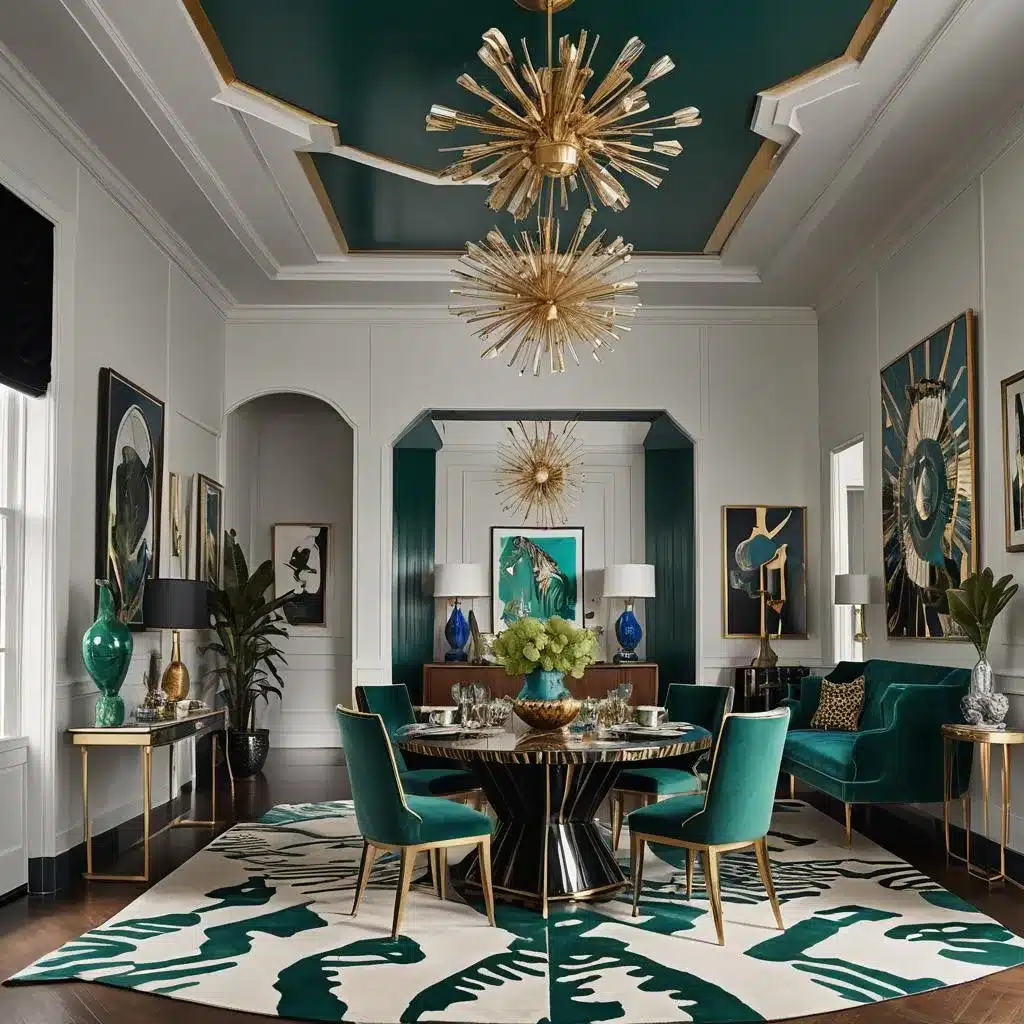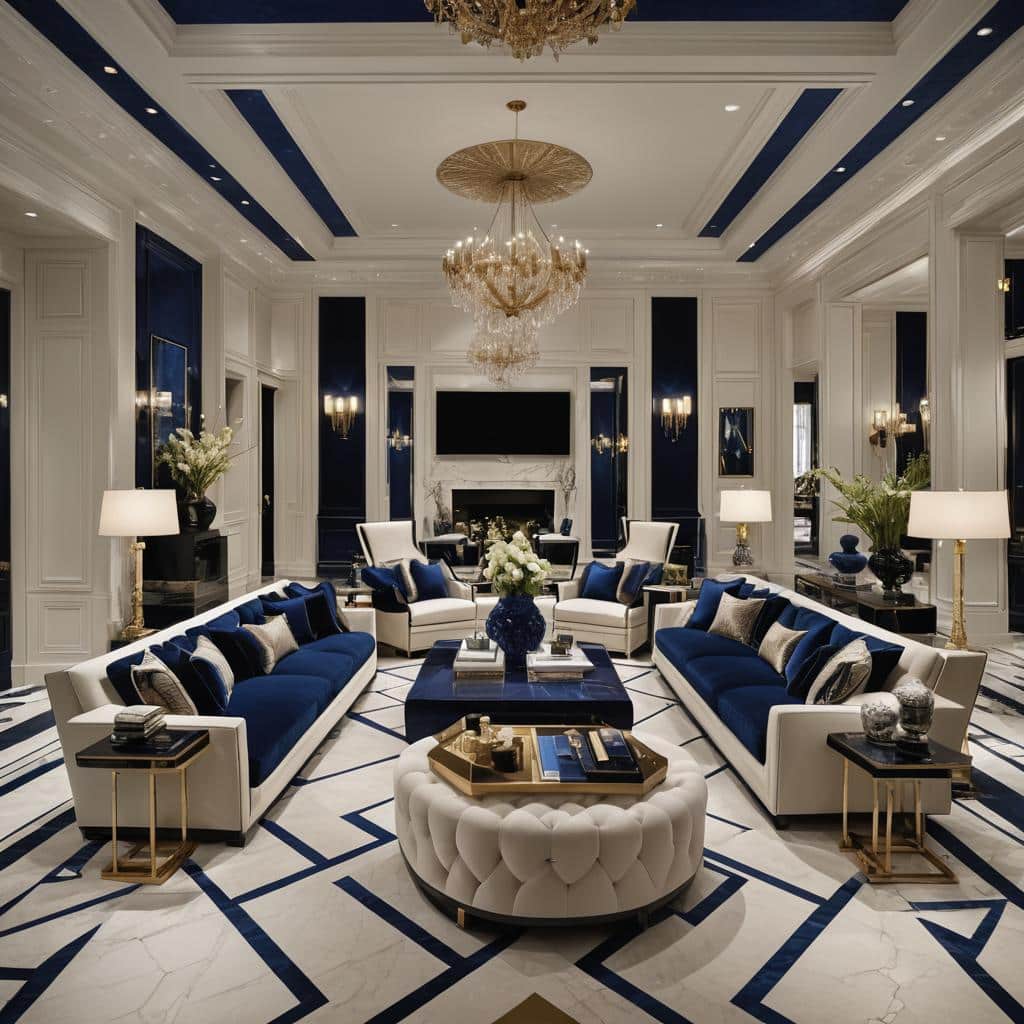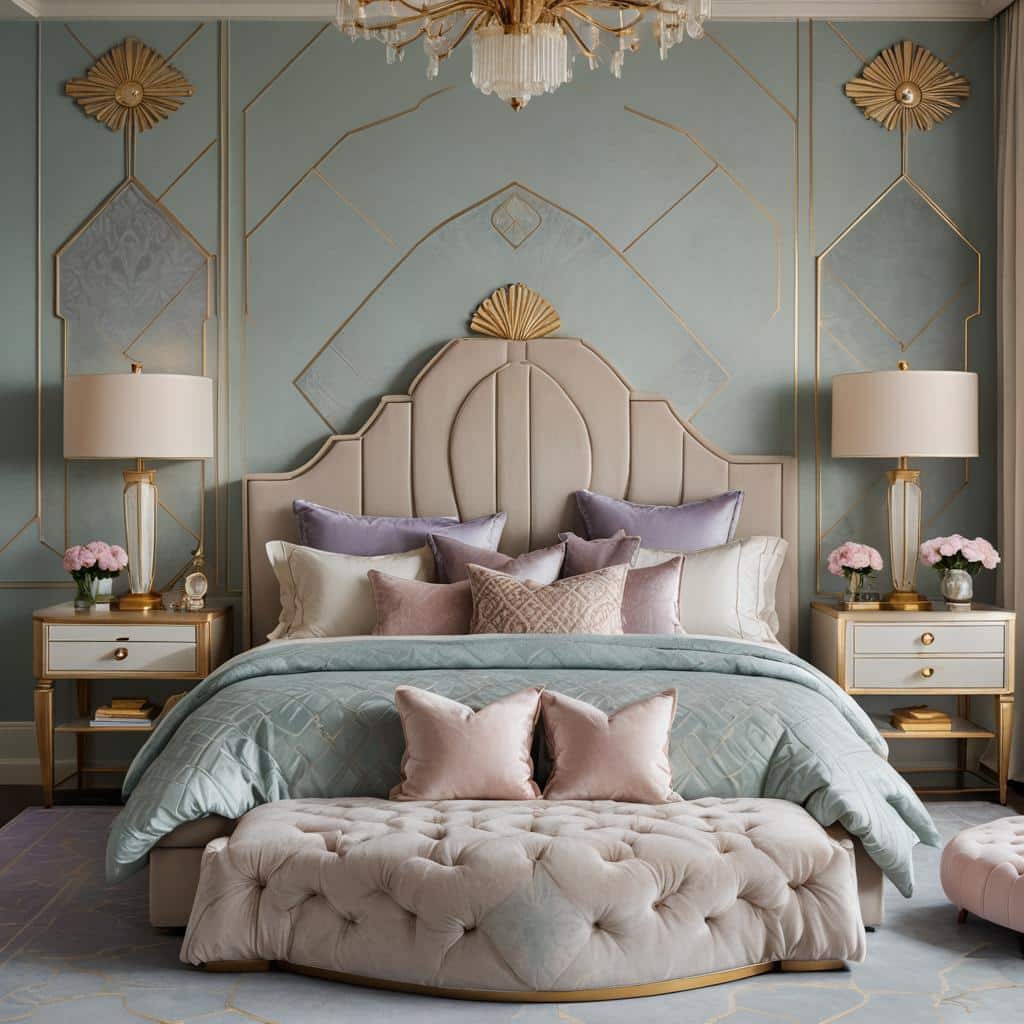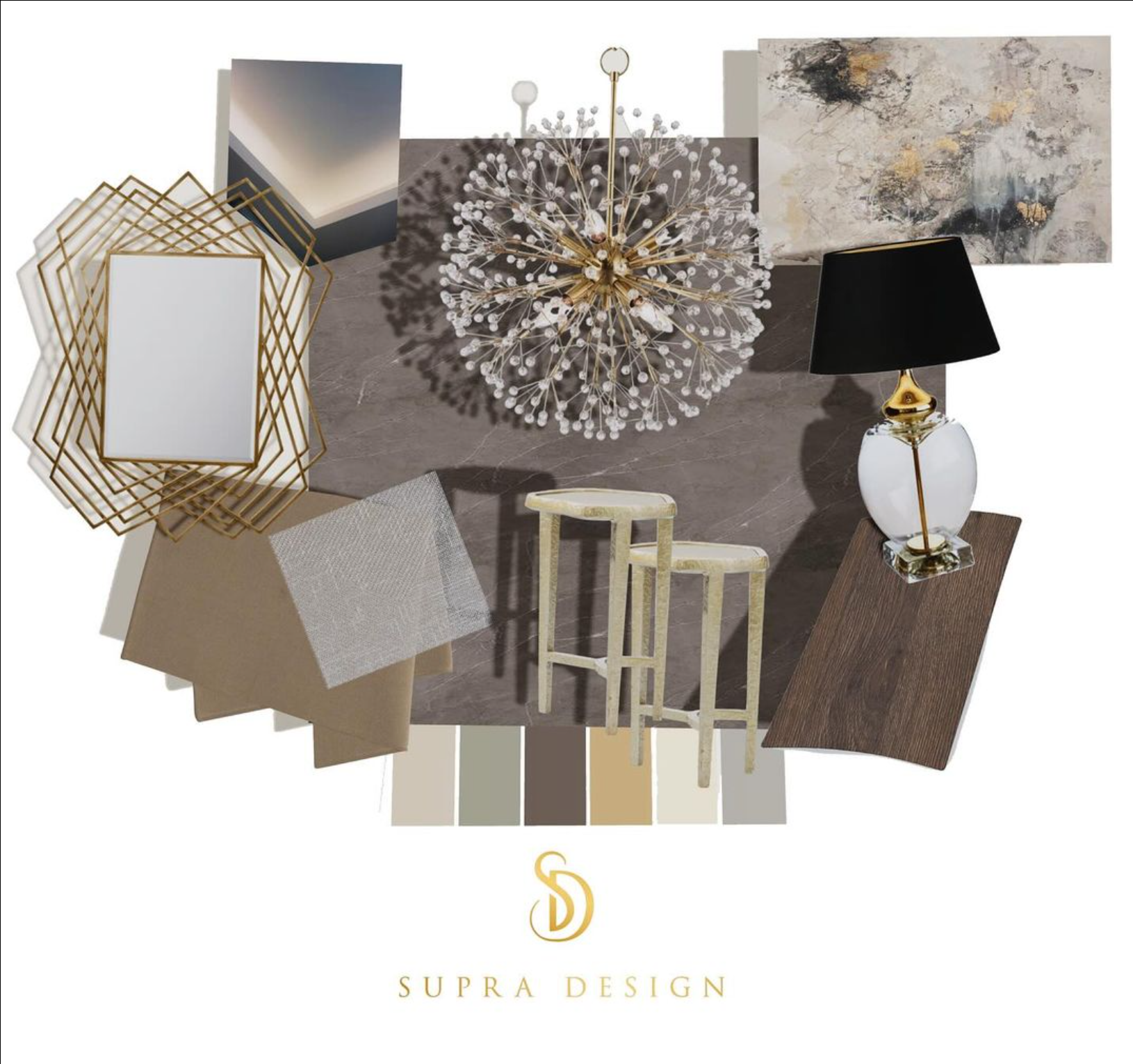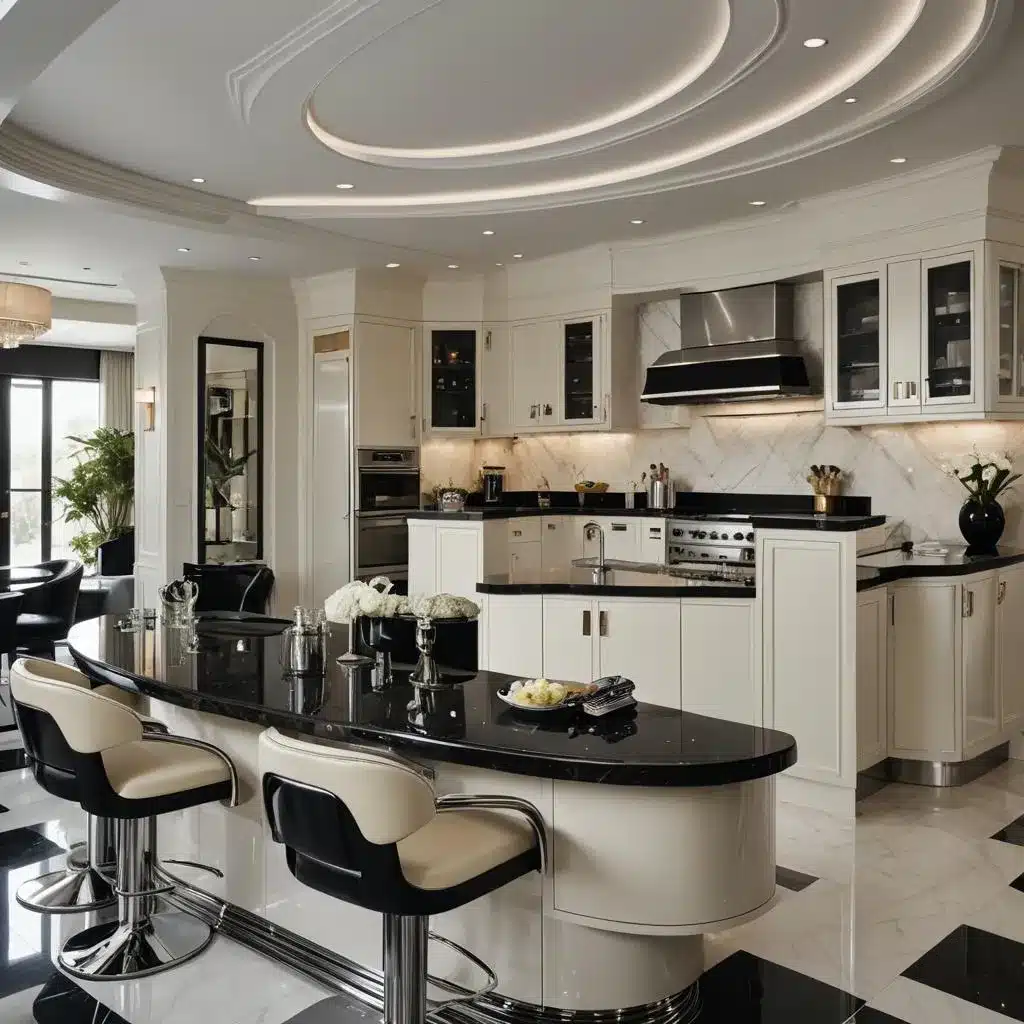The Future of Form:
Modern Interpretations of Art Deco
Exploring the Principles of a Timeless Style
Is Art Deco making a comeback? We definitely think so. Travel back in time to the roaring twenties, a time of cultural and artistic energy. Imagine furniture adorned with bold geometric patterns. Emerald green, fiery red, and sunburst gold wouldn’t simply decorate surfaces; they were meticulously chosen to evoke a sense of glamour and modernity. Alongside these colours, exotic materials like lustrous ebony and sleek polished nickel accents added a touch of opulence. Zebrawood veneers, white onyx, and even a hint of the unexpected with shagreen (shark skin) all contributed to Art Deco’s luxurious themes.
Art Deco is a movement that still captivates us today. However, it is more than just a remnant of the past. Today it is undergoing a spectacular change, flawlessly merging antique elegance with 21st-century functionality and technology.

1920 The Wellesley Hotel Knightsbridge, London
Image credit to Mathedesign

1937 Nelson and Mary Rockefeller’s New York apartment, designed by Jean-Michel Frank
Image credit to InteriorDesign
Art Deco wasn’t just limited to extravagance. It encouraged streamlined forms. Furniture boasted clean lines and geometric shapes – rounded corners, curved bases, and tiered structures created an air of order and sophistication.
This seamless integration of aesthetics and functionality is precisely what makes Art Deco so enduring. It’s more than just a period style; it’s a timeless design philosophy that continues to define the style in its modern interpretations today.
Take the Hoover Building located in Perivale, London. Originally built in 1933 and designed by Wallis, Gilbert, and Partners. It was first designed as the UK headquarters and factory for the Hoover Company, which manufactured vacuum cleaners, the building is a stunning example of Art Deco design.
The Hoover Building features distinctive geometric patterns, decorative elements, and sleek lines typical of the Art Deco style. Its façade is adorned with colorful terracotta tiles, intricate reliefs, and decorative motifs, creating a sense of elegance and sophistication.
Wallis, Gilbert, and Partners vision transformed the Hoover Building into an iconic landmark. Today, while the building no longer serves its original purpose, it has been repurposed and restored, with parts of it now housing retail and office spaces, while still retaining its Art Deco charm.
The Hoover Building stands as a testament to the enduring legacy of Art Deco architecture in the UK, captivating visitors with its timeless beauty and distinctive aesthetic.

The Hoover Building Image credit to Architecture Today

Interior of The Hoover Building Image credit to Architecture Today
Exploring Art Deco: From Origins to Modern Twists
Now that we’ve admired a stunning example of Art Deco in its prime, let’s delve deeper! There are two ways to explore this captivating design movement: by understanding its historical roots or by embracing its modern interpretations. But to truly appreciate the modern twists on Art Deco, a solid understanding of its origins and historical context is crucial.
Following World War I (1914–1918), Art Deco first appeared in the 1920s, in New York with the design of the Empire State Building and Chrysler building saw the beginning of a new emergence of style. Art Deco flourished until the 1930s , with designers such as Jean Dunand igniting the era with his design of the French Embassy’s smoking room, which is now today considered a national treasure.
This era welcomed a new age of hope and technical progress and signaled a departure from the ornate designs of the past. It aimed for modernity and a departure from the conventional looks connected to Europe prior to the war. The 1925 Paris Exposition: A major design exhibition in Paris served as a Launchpad for the Art Deco movement. mpacted interiors at the time, but influenced architecture, fashion, graphic design, and even film at the time.

Elevator of the Chrysler Building, 1930. Image credit to Pinterest

Les Palmiers smoking room Image credit to The Art Newspaper

Official poster of the 1925 Paris Exposition Image credit to Art Deco Society
Art Deco’s enduring appeal lies in its timeless principles. While the era may have passed, contemporary designers like Kelly Wearstler and Studiopepe, are breathing new life into the movement. They’re not merely copying the past; they’re reinterpreting classic elements with a modern twist. Think bold geometric patterns in unexpected colour palettes and luxurious yet comfortable furniture. The result? Innovative, functional, and visually stunning spaces that prove Art Deco’s enduring influence on the design world.

Casa Carlatti by Studiopepe Image credit to Studiopepe

Lupine-private family residence by Kelly Wearstler Image credit to Kelly Wearstler

Dahlia cocktail lounge by Kelly Wearstler Image credit to Kelly Wearstler
Sustainable Materials & Eco-Conscious Design:
Classic Art Deco materials like marble and chrome are being complemented by more sustainable options. Designers are incorporating recycled metals, bamboo, and reclaimed wood to create furniture and accessories that are both stylish and eco-friendly.
Here are some examples of items you can incorporate into your space to infuse it with a modern Art Deco flair:

Recycled Brass and Aluminium Tiles by Ecofriendlyflooring

Cane and olive velvet armchair by Atkin and Thyme

Reclaimed wood coffee table by CFS
Looking further into the future of Art Deco gives us a fascinating view of how tradition and modernity can be further developed. Envision a future with intelligent furnishings that adjust according to your preferences and mood-responsive lighting fixtures, all skillfully incorporated within the traditional elegance of geometric designs. Designers are continuing to push the scope in terms of eco-friendly materials and production techniques, with sustainability serving as a key motivator. This versatility promises a future in which the past inspires a new refinement, ensuring Art Deco’s continuous relevance in the ever-changing interior architectural design scene.
Are you ready to explore how Art Deco can transform your own space? Supra Design is passionate about reimagining this timeless style for modern living, crafting No Ordinary designs that reflect your unique personality or brand
Book a complimentary meeting with our design team to discuss your vision and explore the possibilities of Art Deco’s future in your home.
Featured Art Deco
Art Deco Inspiration
Feeling Inspired
Enhance your space with the bespoke interior architecture and design solutions offered by Supra Design. Tailored specifically for luxury residential, commercial, and hospitality sectors, our services promise to transform your environment. Click below to learn more and start your journey towards exquisite design.




